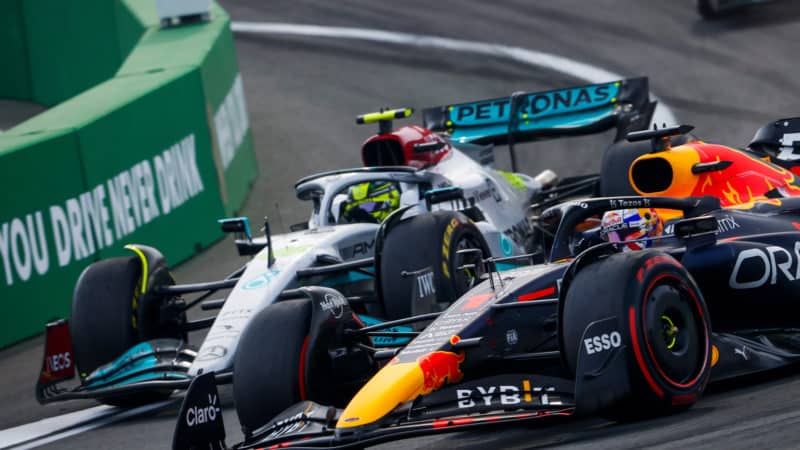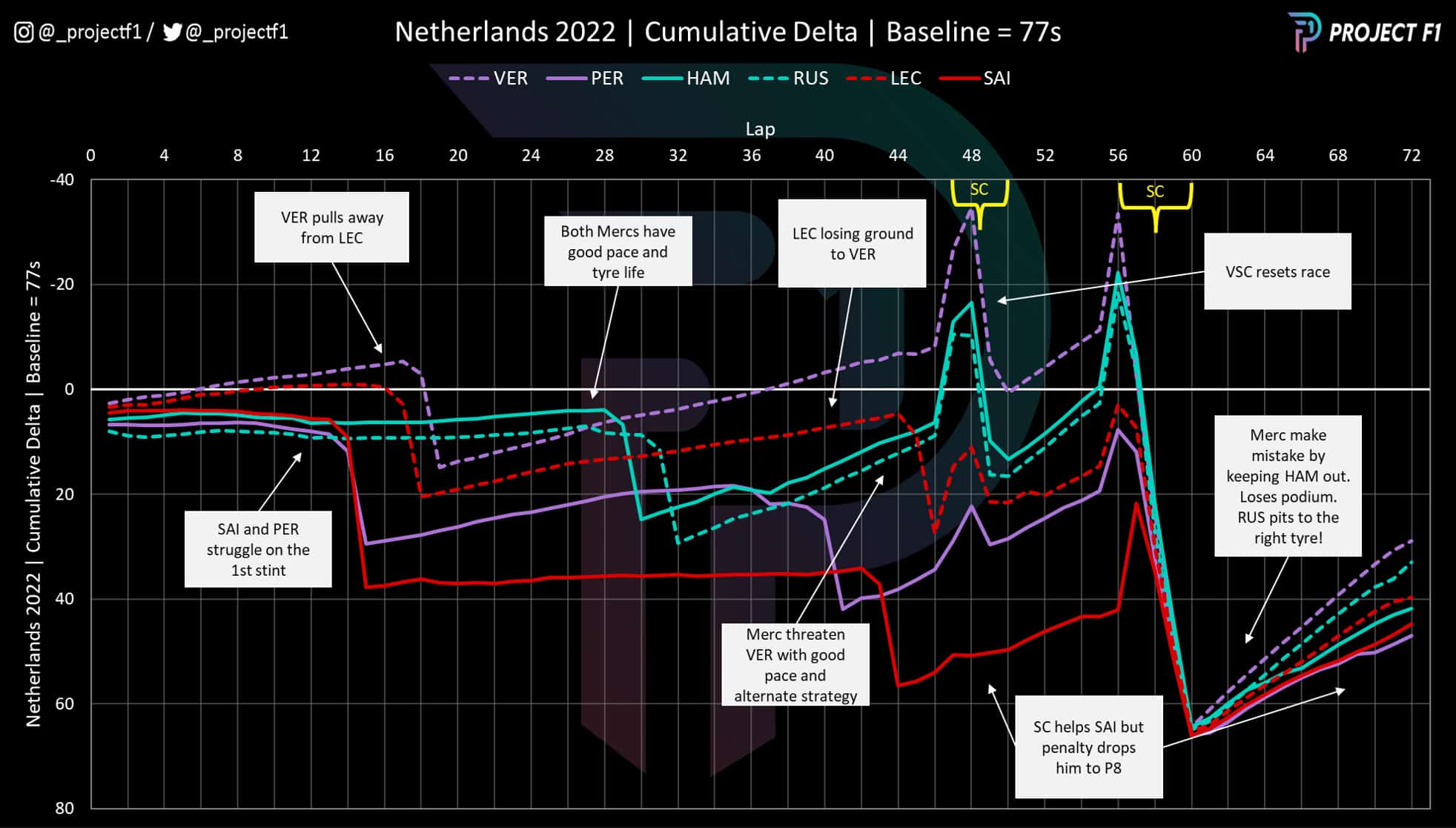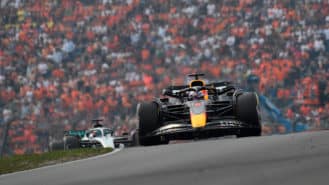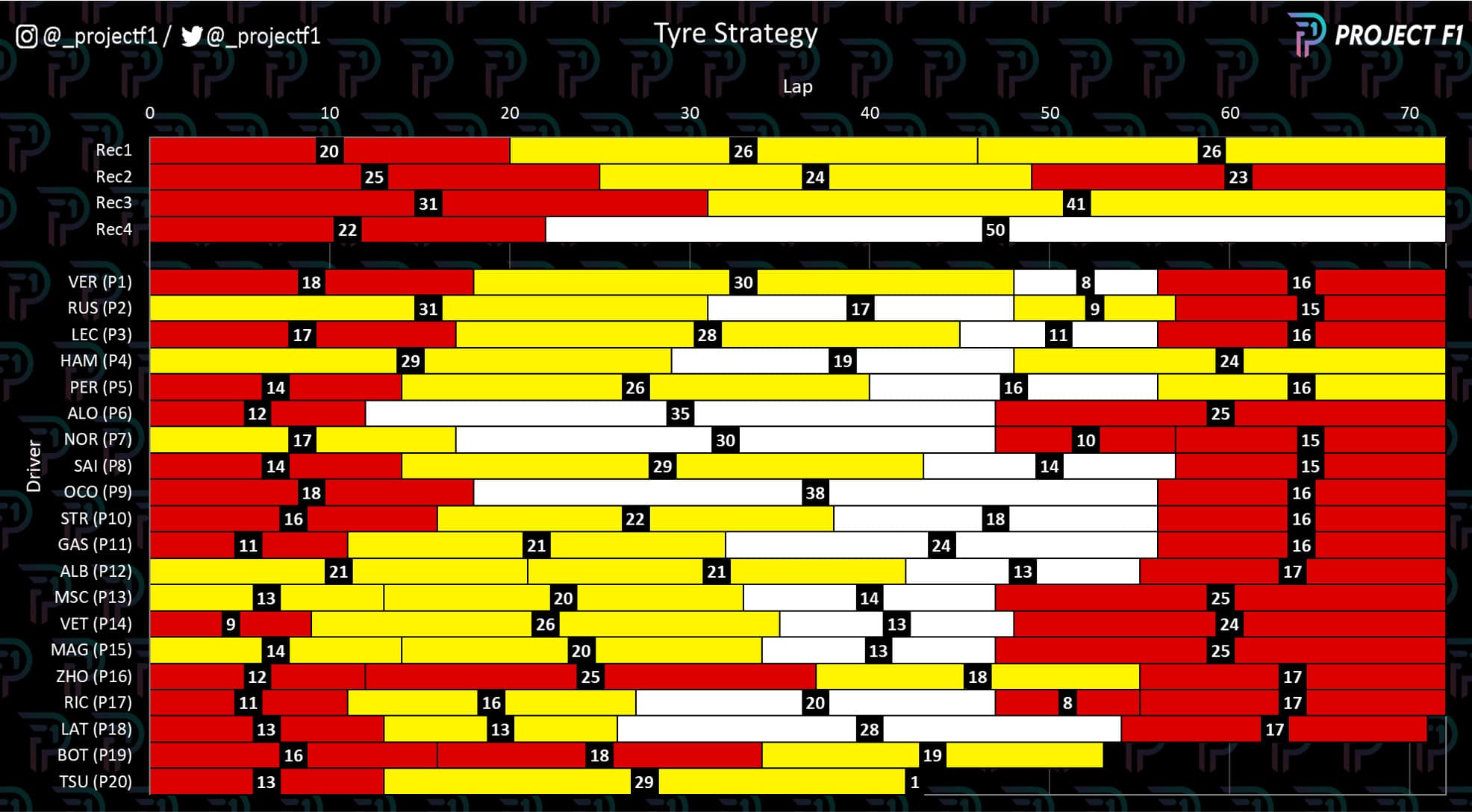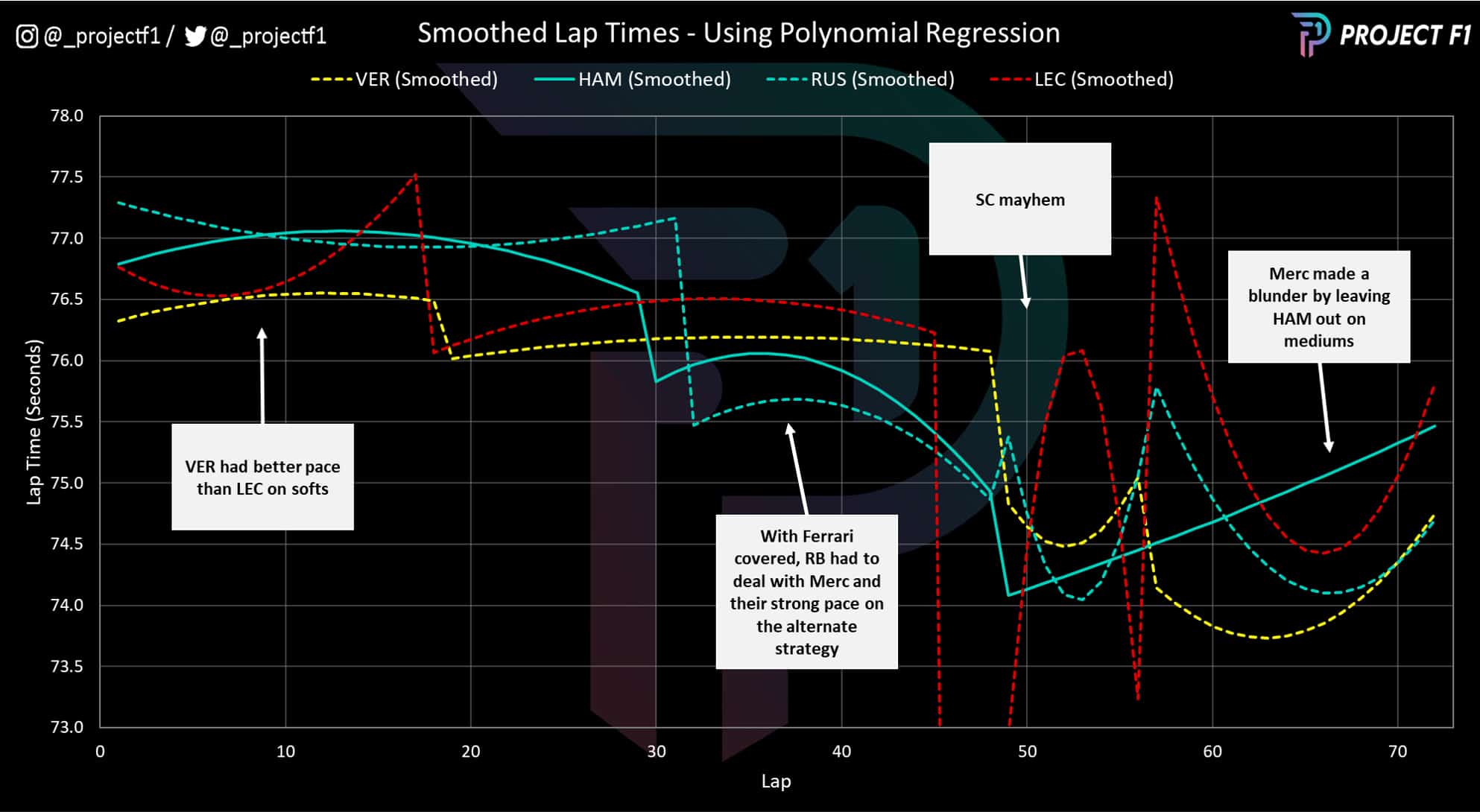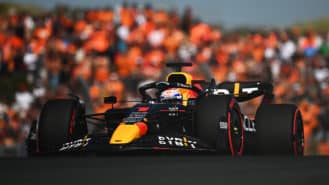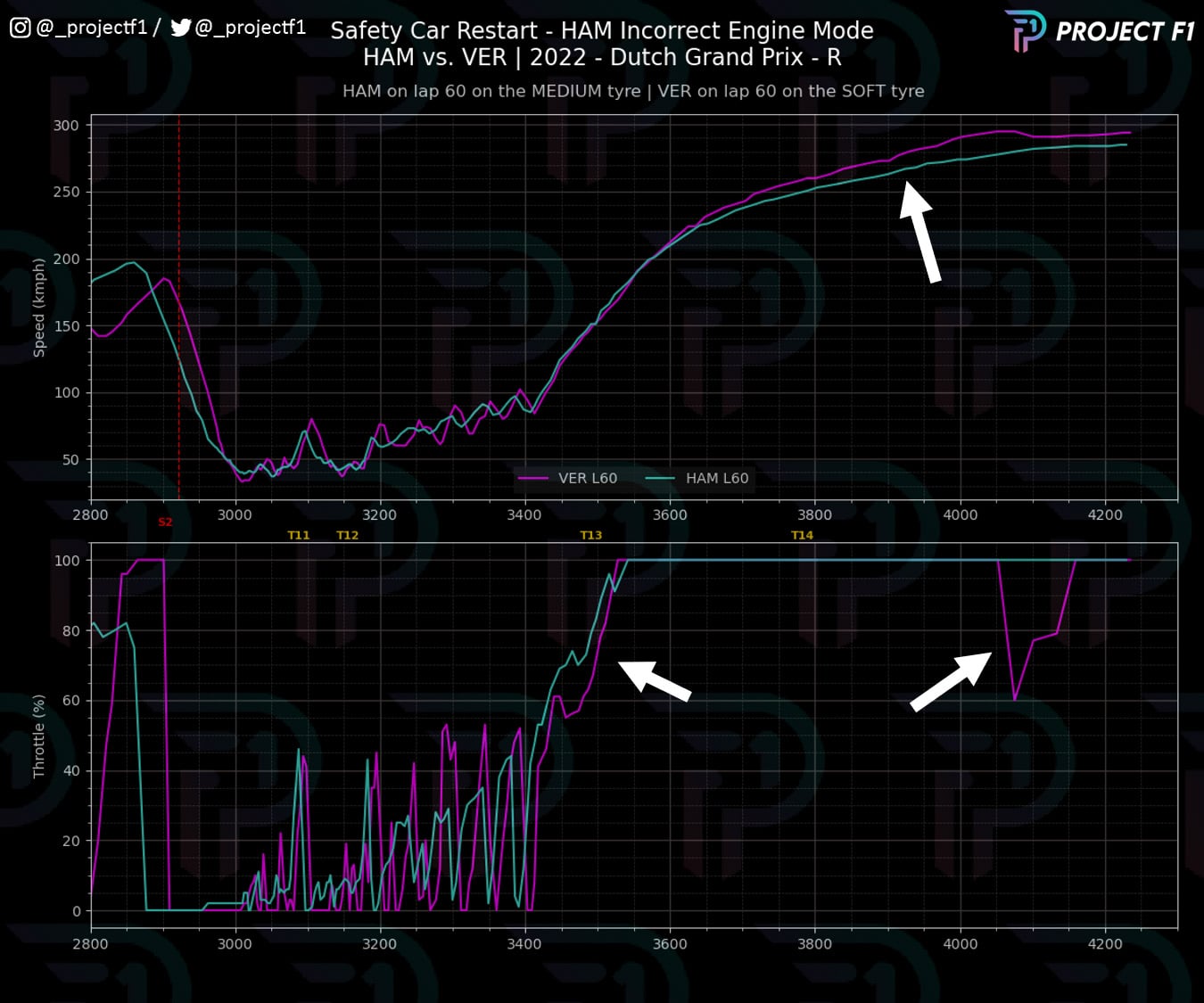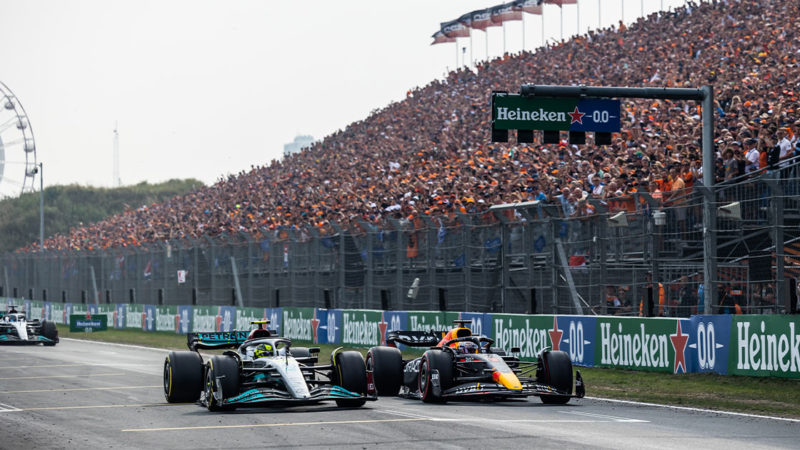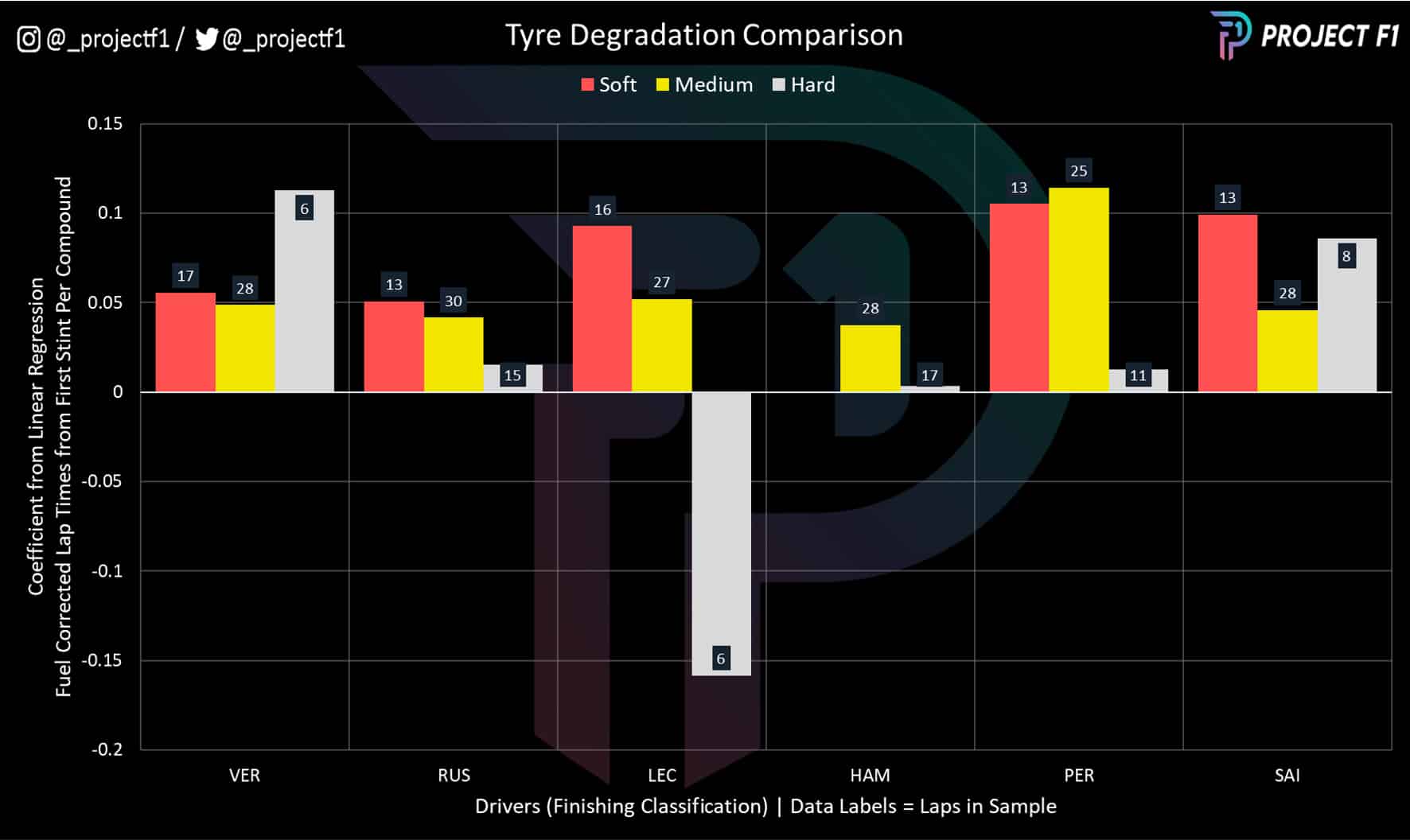If his earlier damage wasn’t enough to ruin his race, then this made sure of it.
Red Bull pitted Perez on the same lap to cover off Sainz. The slow pitstop meant for an easy overtake on the Ferrari (as well as taking out one of its wheel guns).
Elsewhere at the front, Verstappen was opening a gap to Leclerc, the red dotted line showing how the Ferrari’s pace was starting to fall away from the Dutchman. Leclerc subsequently pitted and Verstappen followed suit on the next lap to cover off the threat of an undercut.
In no time at all, Verstappen was building the cushion again – lapping with superior pace compared to Leclerc. It seemed that Red Bull had the Ferrari threat well and truly covered. But what about Mercedes?
This was not a question that has featured much in the 2022 season, but on the banked and sandy slopes of Zandvoort, Mercedes was bringing the challenge to Red Bull, keeping close enough to ensure that Hamilton would take the lead if Verstappen stopped again.
Mercedes strategy strengthens its hand
Chart 2 Tyre Strategy Summary
All of Pirelli’s suggested tyre strategies, visible on the top four lines of the chart above, had the cars starting on soft tyres. It was Mercedes’ decision to start the race on the medium tyre that set it up to be a threat in the race.
As seen above, both Russell and Hamilton were able to go much deeper into the race compared to Verstappen and Leclerc who started on the soft tyre.
This put both drivers in a more comfortable position to perform a one-stop strategy while maintaining the back-up option of completing a two-stop strategy if needed.
Red Bull was also able to complete a one-stop strategy, but its earlier stops meant that this would not be a comfortable undertaking, especially with Mercedes having a 13-14 lap advantage on the hard tyre.
It was likely then that Red Bull would opt for a two-stop strategy – requiring Verstappen to overcome a pitstop deficit and make an on-track overtake for the lead. Mercedes was in a good position.
Safety car smashes the suspense
Chart 3 Trend race pace compared
Smoothing out the lap-by-lap time fluctuations offers a clearer picture of each drivers’ pace in relation to the others. Immediately obvious above is how the first stint on mediums set Mercedes up to lap almost 0.7sec per lap faster than Verstappen on the hard tyre.
Hamilton was most impressive in the first stint, while Russell was extracting more pace on the hard tyres in the second stint.
Chart 3 also highlights how Leclerc in the Ferrari was consistently lagging behind the Red Bull, putting him out of the fight for victory.
The suspense was building as the race headed to the final showdown; Red Bull with a decision to make on which strategic lever it would pull in its bid to win.
But then Yuki Tsunoda’s AlphaTauri broke down and the intrigue evaporated, as a virtual safety car gave Verstappen the opportunity to pit with little risk of losing the lead. As it happened, he changed to hard tyres and the Mercedes drivers followed him in, switching to mediums.
Why did Mercedes opt to pit again? Since Verstappen had gained a time advantage from pitting under the virtual safety car, Mercedes chose a grip advantage in the hope of still challenging for the win.
Chart 3 points to this strategy having legs, as both Silver Arrows had better pace compared to Verstappen on the third stint. But this was short-lived, as a broken-down Bottas soon brought out the full course safety car and bunched up the field.
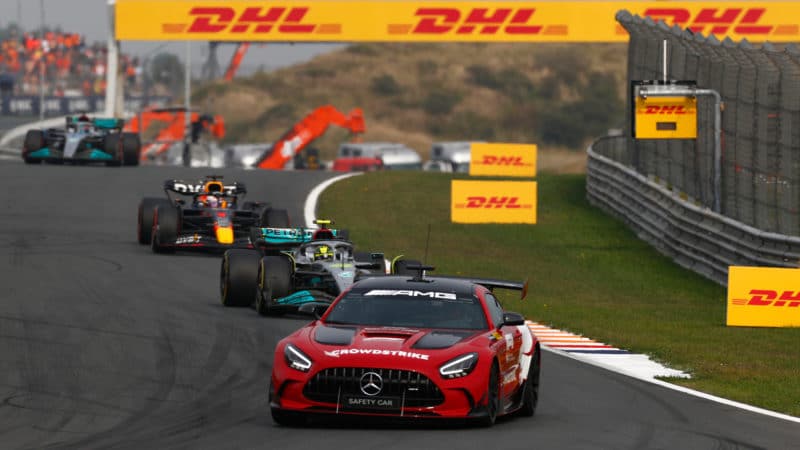
Verstappen and Russell pitted for soft tyres under the safety car, leaving Hamilton vulnerable on older mediums
LAT via Mercedes
With a substantial gap to the rest of the pack, and both Mercedes on the medium tyres, Red Bull and Verstappen rolled the dice and traded track position for soft tyres under the full course safety car. Leclerc would follow suit on the same lap and Russell would follow the trend, albeit a lap afterward. Hamilton was the only one to stay out on the medium tyre, ahead of Verstappen.
So why did Mercedes pit Russell and not Hamilton? Firstly, it’s worth a reminder that Russell pushed for softs and Mercedes complied with the request – as heard on team radio.
